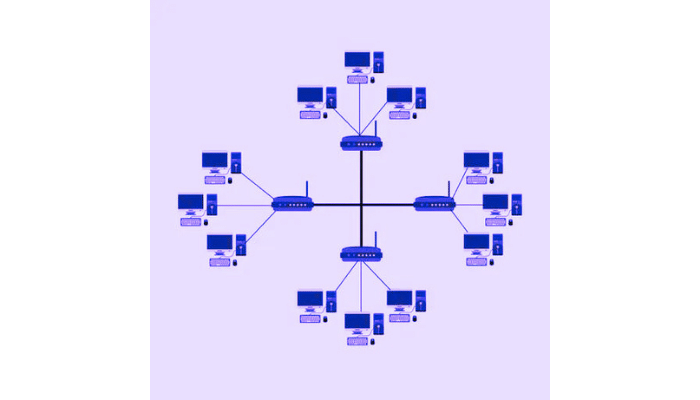When it comes to networking topologies, the extended star topology is often overlooked or misunderstood. In this, we will delve into the intricacies of the extended star topology, explaining what it is, how it works, and its advantages and disadvantages.
What is Extended Star Topology?
The extended star topology is a variation of the traditional star topology commonly used in computer networks. In a star topology, all devices are connected to a central hub or switch. However, in an extended star topology, additional hubs or switches are added to create multiple levels of connectivity.
Imagine a company with multiple departments, each having its own network. In a traditional star topology, each department would have its own central switch. However, in an extended star topology, these departmental switches are connected to a central switch, creating a hierarchical structure.

How Does it Work?
In an extended star topology, the central switch acts as the primary hub, connecting all the departmental switches. Each departmental switch then connects to the devices within its respective department.
This hierarchical structure allows for better organization and management of the network. It also provides flexibility in terms of scalability and fault tolerance. If one departmental switch fails, it only affects that particular department, minimizing the impact on the overall network.
Star Topology vs Extended Star Topology
Star network topology, This setup connects all network devices to a hub or switch. This hub lets devices send and receive data. The star topology is advantageous since one device failure does not affect the network. A dedicated connection to the central hub ensures stable and effective communication for each device.
Alternatively, we have extended star topology. Several star networks are connected to form a larger network. Each star network has a central hub connected to a main hub. The primary hub is the network’s communication hub.
Scalability is a major benefit of extended star topology. It makes adding devices or star networks easy without disturbing connections. Large networks that expand frequently benefit from this. Redundancy is added by the extended star topology. Even if one-star network fails, the others can function.
However, the extended star topology has limitations. It requires more cabling and hubs, increasing network cost and complexity. Each hub is a possible single point of failure, adding more points of failure. To ensure network resilience, rigorous planning and redundancy are needed.
Advantages of Extended Star Topology
- Scalability: The extended star topology allows for easy expansion as new departments or devices can be added without disrupting the existing network.
- Fault Tolerance: The hierarchical structure of the extended star topology ensures that a failure in one department or switch does not bring down the entire network.
- Centralized Management: With a central switch, network administrators can easily monitor and manage the entire network from one location.
Disadvantages of Extended Star Topology
- Cost: Implementing an extended star topology can be more expensive compared to other topologies due to the need for additional switches and cabling.
- Complexity: Managing a hierarchical network structure can be more complex and time-consuming compared to simpler topologies.
The extended star topology offers a robust and scalable solution for organizations with multiple departments or networks. While it may come with additional costs and complexities, the advantages in terms of scalability and fault tolerance make it a viable option for many businesses.
Next time you come across the extended star topology, you will have a better understanding of its purpose and benefits.
